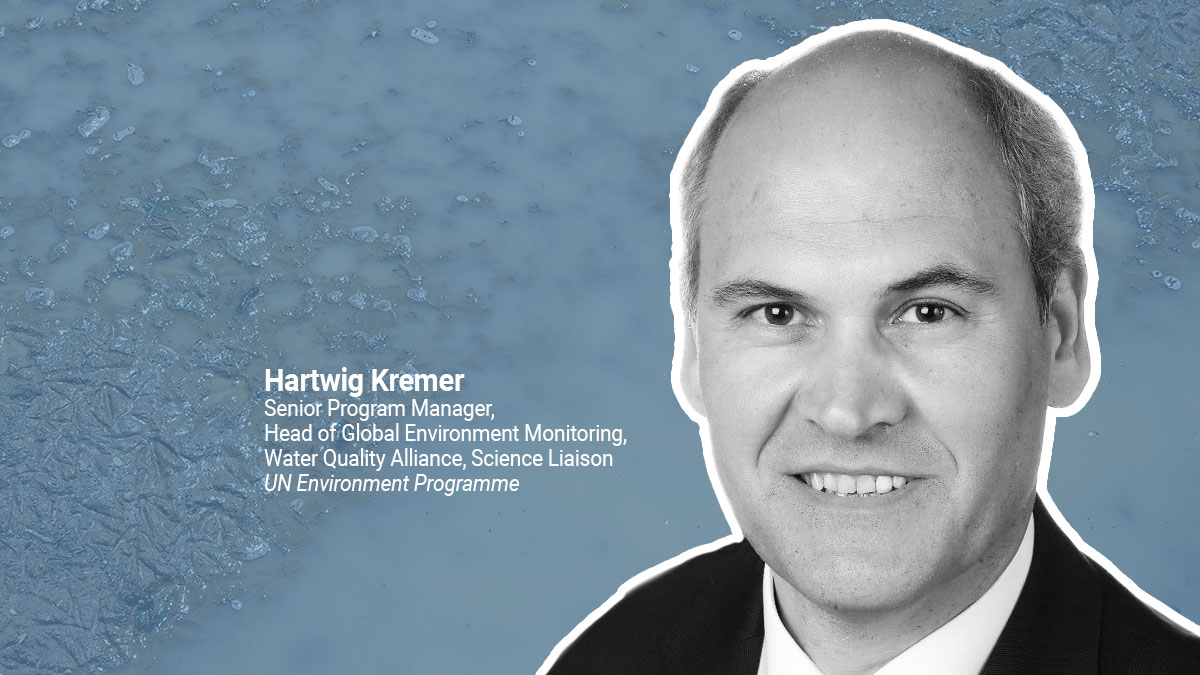Addressing the Global Water Crisis: Where Do We Go from Here?
Leonardo da Vinci once said, “Water is the driving force of all nature.”
In this case, Leonardo proves wise beyond measure. All humans depend on water for drinking, sanitation, and hygiene. We use it to prevent disease and stay healthy. We need it for our food sources, commerce, and industry. Yet, we are in a global water crisis, and, despite the news and regular reports on the impact of climate change and other factors, many remain unaware of the precariousness of our situation.
It’s estimated that by 2030 water scarcity in several regions of the world will displace hundreds of millions of people, and UNICEF has predicted that one in four children will live in areas with extremely high water stress by the year 2024.1
Such dire information begs the question, why has this happened and where can we go from here?
Dr. Hartwig Kremer, head of the United Nations Environment Programme’s Global Environment Monitoring Systems (GEMS) & World Water Quality Alliance Coordination team, spoke at our Global Environmental Science Summit last June. He shared his knowledge and thoughts about developing goals and meaningful actions that can help ensure the sustainable management of water and sanitation now and in the future.
Dr. Kremer’s key findings include data proving water pollution has worsened since the 1990s in almost all rivers in Latin America, Africa, and Asia. Moreover, severe pathogen pollution already affects one-third of these regions’ rivers. As a result, the number of people coming into contact with polluted surface waters in these regions could range into the tens of millions. He also found that agricultural farming that uses salinated water for irrigating crops negatively impacts the quality and yield of crops and risks food production and security in many areas in the world.
Figure 1. How the Global Water Crisis Impacts Human Health2


Now Is the Time for Action
Approximately 90% of all drinking water in the world comes from rivers, lakes, and streams2. While the majority of rivers in developing countries are still in good condition in 2022, there are no guarantees they will remain this way unless judicious action is taken3.
Dr. Kremer explained that threats to these sources include emerging and persistent water quality problems in industrialized countries due to pharmaceutical residues, eutrophication (the excessive richness of nutrients in water due to residues in runoff), and myriad other factors.
There is some positive news and hope for change, including opportunities for averting further pollution and restoring the rivers that are polluted through a mix of management and technical options supported by good governance.
The sixth goal of the UN 2030 Agenda for Sustainable Development is to work on clean water and sanitation for all. This goal addresses the entire hydrological cycle, involving the continuous circulation of water through evaporation, transpiration, condensation, precipitation, and surface runoff. While not a simple task or one that will be quick to complete, addressing water issues in all forms can eventually help clean lakes, rivers, glaciers, oceans, seas, groundwater, and water vapors in the atmosphere.
Proper testing will always be a key factor in understanding water quality and how to improve it at every phase of the water cycle. Before we can ensure that water is safe for human consumption, it must be tested for a wide range of contaminants, including trace elements, volatile compounds, semivolatile compounds, radiochemicals, PFAS, and other emerging contaminants. PerkinElmer provides complete solutions for water quality testing and analysis.
Click the link below to learn more about the types of testing available.
NOTES

